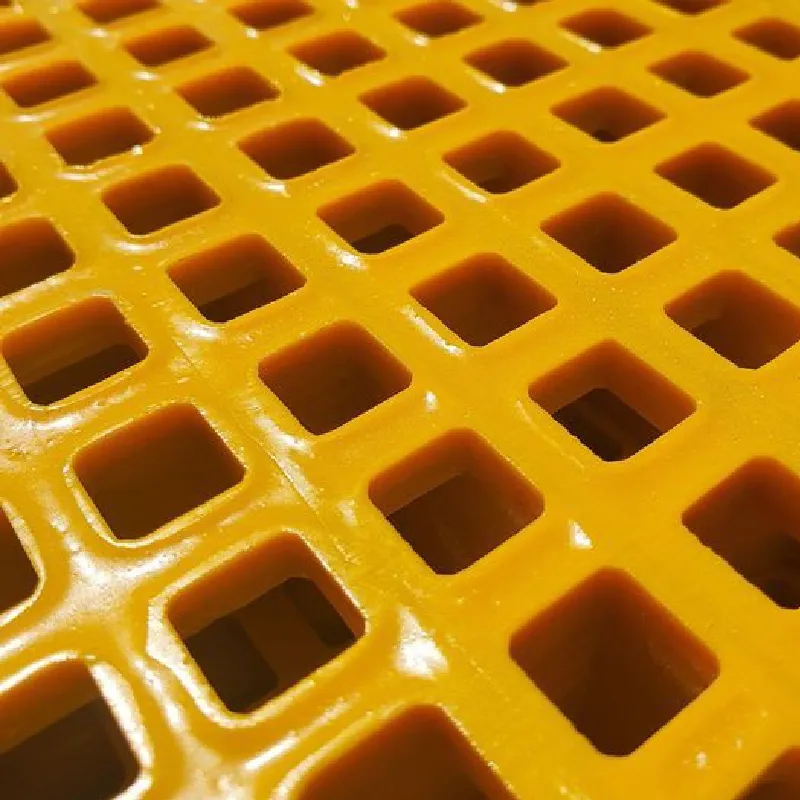loading...
- No. 9, Xingyuan South Street, Dongwaihuan Road, Zaoqiang County, Hengshui, Hebei, China
- admin@zjcomposites.com
- +86 15097380338
- Welcome to visit our website!
frp pultruded profiles
The Growing Importance of FRP Pultruded Profiles in Modern Construction
In recent years, the construction industry has witnessed an increasing shift towards using composite materials due to their superior performance characteristics. Among these materials, Fiber Reinforced Polymer (FRP) pultruded profiles have gained significant attention for their unique properties and diverse applications. This article delves into the benefits, manufacturing process, and applications of FRP pultruded profiles, highlighting their transformative role in modern construction.
What are FRP Pultruded Profiles?
FRP pultruded profiles are composite materials created through a process known as pultrusion, where fibers are continuously pulled through a resin bath and then shaped in a heated die. This process allows for the production of continuous lengths of FRP components with constant cross-sectional shapes, including beams, rods, angles, and channels. The fibers, typically glass, carbon, or aramid, provide strength and rigidity, while the polymer matrix offers corrosion resistance and versatility. As a result, FRP pultruded profiles are lightweight yet incredibly strong, making them ideal for various construction applications.
Key Benefits of FRP Pultruded Profiles
1. Corrosion Resistance One of the most significant advantages of FRP materials is their resistance to corrosion. Traditional materials such as steel and aluminum are prone to rusting and deterioration when exposed to moisture, chemicals, and harsh environmental conditions. In contrast, FRP pultruded profiles can withstand these elements, thus prolonging the life of structures and reducing maintenance costs.
2. Lightweight Nature FRP pultruded profiles are considerably lighter than traditional materials. This lightweight property not only facilitates easier handling and installation but also reduces the overall load on support structures, allowing for more efficient designs and potentially lower construction costs.
3. High Strength-to-Weight Ratio The strength-to-weight ratio of FRP materials is often superior to that of steel and aluminum. This characteristic enables engineers to construct lightweight structures without compromising on strength and integrity, which can lead to innovative architectural designs.
4. Thermal and Electrical Insulation FRP materials are good insulators against both heat and electricity, making them suitable for applications in environments where thermal sensitivity and electrical safety are paramount.
frp pultruded profiles

5. Versatility in Design The pultrusion process allows for a high degree of customization in terms of shape, size, and color. Designers can easily create unique profiles that meet specific aesthetic and functional requirements.
Applications in Construction
FRP pultruded profiles are versatile and find applications in various sectors
- Infrastructure They are increasingly used in bridge construction, boardwalks, and piers due to their durability and resistance to environmental factors. - Building Construction Architects utilize FRP profiles in framing, cladding, and roofing systems, where weight reduction and design flexibility are crucial.
- Industrial Facilities In chemical processing plants, FRP profiles are used for walkways, handrails, and structural supports, where exposure to corrosive substances is a concern.
- Energy Sector Wind turbine blades and solar panel support structures are examples where the lightweight and strong characteristics of FRP pultruded profiles are essential for efficiency and longevity.
Conclusion
The adoption of FRP pultruded profiles is reshaping the landscape of modern construction. Their combination of strength, lightweight nature, and resistance to environmental factors makes them an attractive alternative to traditional building materials. As industries continue to seek innovative and sustainable solutions, FRP pultruded profiles are poised to play an increasingly vital role in the future of construction. With ongoing advancements in technology and manufacturing processes, the potential for FRP profiles is boundless, opening new avenues for engineering and architectural innovation.
-
The Rise of FRP Profiles: Strong, Lightweight, and Built to LastNewsJul.14,2025
-
SMC Panel Tanks: A Modern Water Storage Solution for All EnvironmentsNewsJul.14,2025
-
GRP Grating: A Modern Solution for Safe and Durable Access SystemsNewsJul.14,2025
-
Galvanized Steel Water Tanks: Durable, Reliable, and Ready for UseNewsJul.14,2025
-
FRP Mini Mesh Grating: The Safer, Smarter Flooring SolutionNewsJul.14,2025
-
Exploring FRP Vessels: Durable Solutions for Modern Fluid HandlingNewsJul.14,2025
-
GRP Structures: The Future of Lightweight, High-Performance EngineeringNewsJun.20,2025
